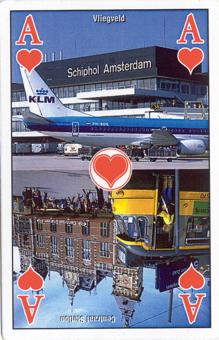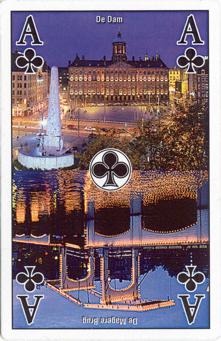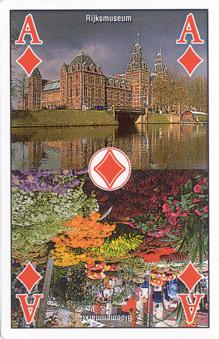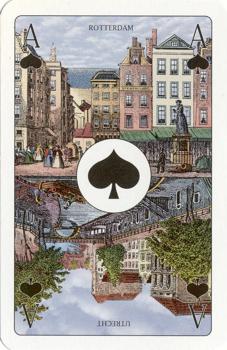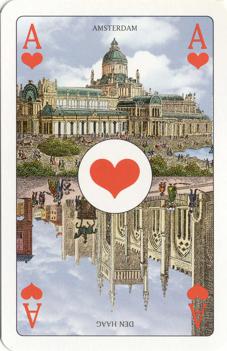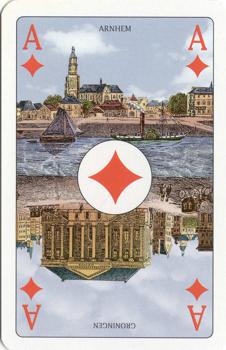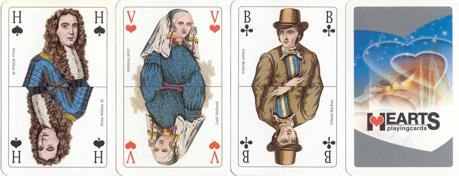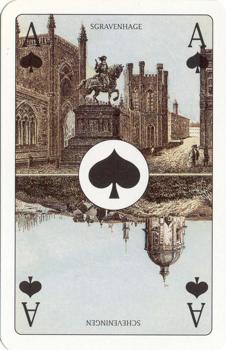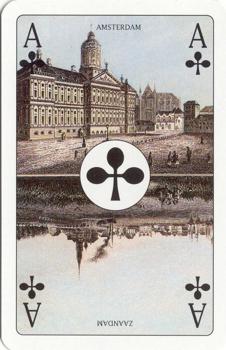 |
Here
too the original designs and colours have been digitally adapted and a
modern type font was used. |
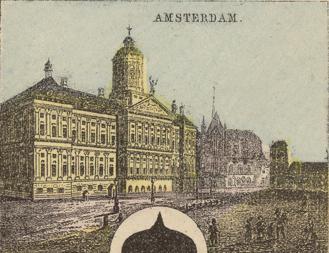
|
|
|
TIMELINE
Now that the decks have been shown
and the circle completed, a rough timeline can be constructed in the history of
the Dutch scenic aces:
* 4th quarter of the 19th century: German manufacturers
introduced Dutch scenic aces here in imported packs.
* 1st quarter of the 20th century: a Dutch printing
company starts publishing decks with scenic aces in an effort to compete with
the German quality packs.
* 1st and 2nd quarter of the 20th century:
Belgian manufacturers start publishing the lesser quality decks with different
sets of Dutch scenic aces for the general public. Various standard patterns were
used.
* 3rd quarter: the Belgian manufacturers hold a large part of the
Dutch (advertising) market and the only major Dutch manufacturer disappears from
the stage. Each Belgian manufacturer still used their own version of the Dutch
pattern and accompanying set of aces.
* 4th quarter: the playing card divisions of three Belgian
manufacturers have been united in Carta Mundi and this firm will from now on
control the Dutch advertising market almost completely with their standard Dutch
pattern and standard set of scenic aces.

This monopoly on the Dutch market may be a blessing for the general public
in terms of easy recognition at playing, but as a collector I would prefer a bit
more competition again. In the past this has proven to be a guarantee for a more
diverse offering of patterns and accompanying sets of aces. It's a pity, but
after 25 years of looking at the same pattern and these aces, there's nothing
to dream about anymore.
Joop Muller
Literature:
-Turnhout, E. Tilman & E. van Autenboer, published by Nationaal Museum van
de Speelkaart, 1983.
-Braun Catalogue IV: Dondorf.
-Wüst Catalogue by M. Shaw & P. Symons, 2006.
-Van NSF – SN by N. van Berkel, B. Haleber, L. Rijnen, A. Sinselmeyer, 1986.
-Speelkaarten van Nederlandse Gelegenheidsspeelkaartenmakers, by W. Hogenes
& J. Sietsma, 1988.
-De Speelkaarten collectie van het Belastingmuseum, by Prof. Dr. Van der Poel,
1993.
previous


